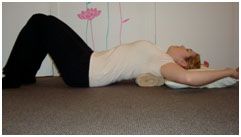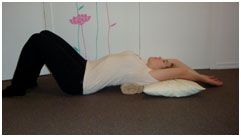These days life is fast, we’re working harder, for longer hours and trying to balance keeping fit, eating well and spending time with our loved ones. Show’s like Master Chef and Jamies Kitchen have become hugely popular, but I must admit even though they make me dream of all the fabulous new adventurous foods I would love to cook, the reality is that I’m so busy working as a Naturopath in Brisbane, that I don’t cook as often as I’d like to. My answer is to have some quick, easy dinner options ready to go in the freezer that I’ve done up in a big old slow cooker.
In the 1950’s the average woman spent around 20 hours per week preparing food and cleaning up. These days, women average 5.5 hours per week, even less for full time workers! So the dilemma is “how do I eat well when I live such a busy lifestyle?”
The modern solution we’ve all become so used to is convenience foods. Everything comes in a package these days, some foods look so different to their original state that they’re hard to recognize. Have a sneak peek into most peoples trolley’s at the super market and everything’s in boxes, wrapped in plastic and tins. How many of the ingredients listed in the foods on the supermarket shelves these days would your Grandma have recognized when she was a girl? Food has changed from is original state and we’ve all gotten used to it without questioning it. The question we need to ask ourselves is “is this food nourishing my body?” and “what are all these numbers and ingredients added to my food that I don’t recognize?”
Foods these days are marketed to us, appealing to us with claims such as “diet” “low fat” or “sugar free.” Take this ingredients list from a popular diet yoghurt, Yoplait forme: consider how many of these ingredients you recognize and if you think they would be easy to digest and healthy for your body: THICKENERS (1442 (FROM TAPIOCA), 440), GELATINE, SWEETENERS (950, 951), ACIDITY REGULATOR (331), FLAVOURS, NATURAL COLOURS (160b, 120), MALTODEXTRIN (FROM MAIZE), PRESERVATIVE (202), FIRMING AGENT (509), ENZYME (LACTASE)
An easy way to navigate your way through this minefield of processed, fake foods is to give them the flick and opt for nutritious whole foods. I opt for Jalna natural yoghurt – no nasties!
Whole foods are foods eaten as close to their original, natural state as possible. Whole foods are all about getting the maximum bang for your buck nutrition wise. They are full of vitamins and minerals, fiber and are most importantly easy for your body to process. Not sure if you’re eating whole foods? Start reading the ingredients list on your food labels and if you don’t recognize a number or an ingredient, then don’t buy that food.
An example of a whole food breakfast cereal would be Continue reading “Wholefoods vs Fad Foods”


